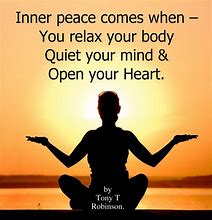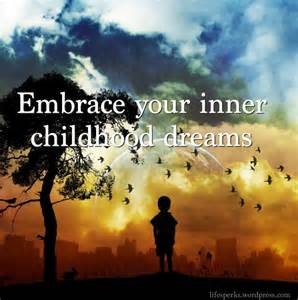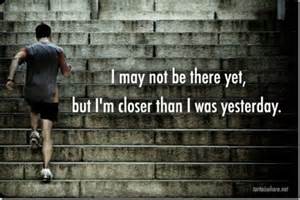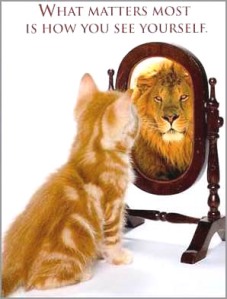
Sister Joan Chittister (an American Benedictine nun, theologian, and author) writes in the January 2020 edition of The Monastic Way, “So much of life gets consumed by energy we should never have expended by giving in to frustration, by struggling against the obvious, by trying to wrench the present to meet our own limited expectations. Then one day it dawns. Serenity, the ability to stand unshaken in the middle of a turbulent world, is the keel of the healthy life.”

Serenity is a state of peace amid difficulty; it is being calm, at peace, and untroubled despite what may be happening around us. As I write this, much of the world is still reeling from the Covid-19 virus. So much frustration and anxiety have entered lives as a result of the virus and its devastating effects. I know I long for serenity amid the chaos. I hope and pray that friends, family, and even those I don’t know are able to find moments of calm and peace amid all the fear, anxiety, unknowns, and frustrations.

But as Sister Chittister says, “Serenity does not come to the average life quickly or easily.” Why is that? Because serenity is a state of mind, one we have to work to develop. For many, serenity isn’t the natural fallback especially in times of unexpected change or in times of emotional stress.

A serene mind is one that gives us the ability to handle anything that comes its way, no matter how big, how tough, how drastic, or how severe. And while serenity isn’t the natural fallback, since it is an attitude, it is something we can work toward developing. We can:
Remember serenity is a choice. So choose to release negative chatter and stress and focus on calmness and peacefulness. What we focus on gets strengthened.

Recognize what is creating the tension in our lives and work to resolve it.
Recharge with some fresh air. The atmosphere outside the four walls of our offices and homes provides a refreshing change of pace that recharges our minds and our spirits. Take in the smells, the sounds, the sights and allow them to refresh and invigorate us.
Smile. Smiling is an expression that denotes pleasure, happiness, or joy. Smiles allow us to feel the bright side of life and feel and think in a more positive way. And, when we feel positive or happy or joyful, we are more likely to be serene and peaceful.
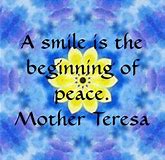
Listen to our inner voice. Jonathan Lockwood Huie (author and “philosopher of happiness”) tells us, “Your inner voice always knows what to do, but it is a quiet voice. You can only hear the whisperings of your inner voice – your inner compass – when you turn down the volume of your fears, your regrets, your resentments, and the fear-based advice your neighbors are so willing to give you.” Our inner voice is a short cut to serenity but we need to listen for it and heed its advice.
Check in with our positive “posse.” Surrounding ourselves with encouraging and positive people helps keep energy vampires from stealing our peace of mind, our serenity.

Forgive. When we let go of and move beyond old hurts, resentments, memories, and anger we give ourselves the gift of peace. Forgiving ourselves and others is very empowering and freeing. Forgiveness opens space for serenity to take hold and blossom.
Create a blessings or gratitude list. Looking at our lives through a lens of gratitude makes the good seem even better, the not-so-good look good, and makes us more appreciative of what we do have. It also helps us focus on the positive. When we are in a positive frame of mind, we tend to have a sense of tranquility, calm, and peace (all of which help with our serenity).
Practice acceptance. Spiritual teacher Eckhart Tolle advises, “Whatever the present moment contains, accept it as if you had chosen it.” Acceptance means recognizing and understanding our current situation and what we can and cannot change within it. When we are able to do this, it releases much stress from us and allows us to move forward in a calmer manner.

Be totally in the present. When we live in the present moment, we are mindful of what is happening now. We are not distracted by the past or preoccupied with the future. Being present minded keeps us grounded, connected, and happier.
Maintain perspective. Look at all sides of the issue. This helps maintain balance.

Do a random act of kindness. Being kind to others makes us feel good about ourselves. Feeling good about ourselves leads to an inner peace. That inner peace leads to being serene.
Take things one day at a time. Get through one day before thinking about how to deal with the next day. While we may have to plan for the future, we don’t have to worry about it. We can keep the future in sight, but our focus should be on the here and now.
Indian religious teacher and spiritual master, Swami Satchidananda, advises, “We can be serene even in the midst of calamities and, by our serenity, make others more tranquil.” I love this advice. It is up to us to bring serenity into the moments of chaos in our lives. We may have to work at developing our attitude of serenity, but we all have the capability to do so. And, when we are at peace, we will be better able to spread that to those around us.

Please stay safe and well dear readers. Thoughts and prayers are with you.




